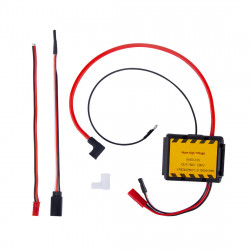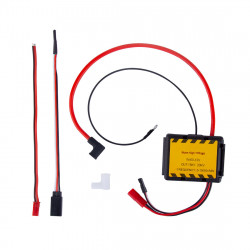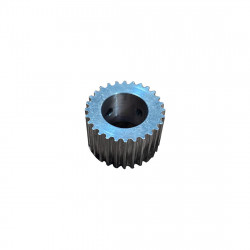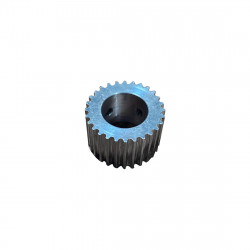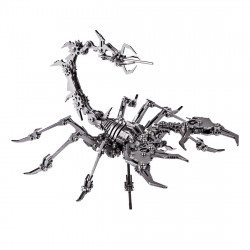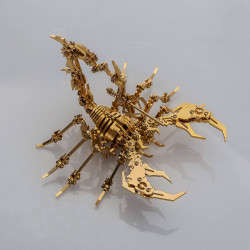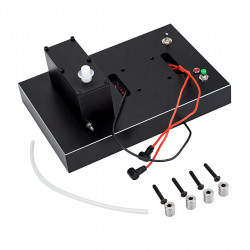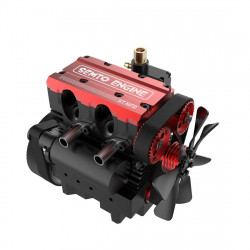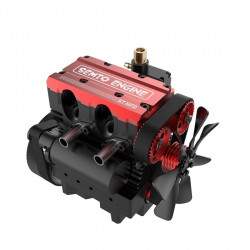13 May
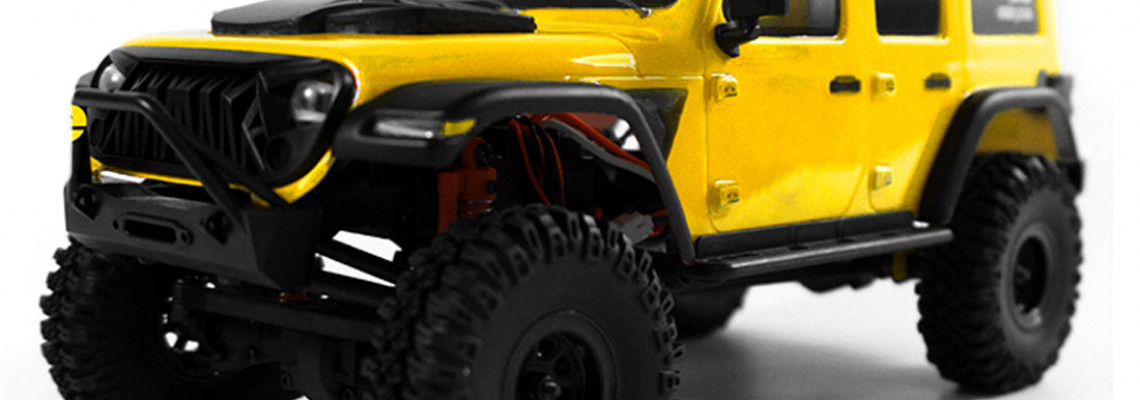

0 Comment(s)
95 View(s)
Radio Control Hobby Abbreviations/Glossary
As a novice attempting to enter the fascinating pastime of radio control, which essentially has its language, I may become a little lost. With this list of abbreviations, I want to clarify a few things. Please be aware that this is only a list of the most often-used abbreviations; there are many more. Please comment below with any recommendations you may have if you think I've missed any significant ones.
Common/Miscellaneous
- RC - Radio Control: "Radio control" is technically correct, even if you may see "remote control." Any vehicle, including slot cars and tether line planes, can be operated remotely. Since radio control is a subset of remote control, RC is the most accurate Radio Control.
- RTR - The phrase "Ready To Run" refers to pre-assembled RC cars and "Ready To Run," albeit you will typically need to purchase a battery and charger.
- ARR – RC vehicles that are pre-assembled and "Almost Ready to Run" are referred to as such; typically, this indicates that the model lacks a battery, motor, and radio equipment (transmitter and receiver).
- Kit - A phrase used in RC vehicles that denotes a "build yourself" kit that typically lacks electronics.
- BND – When an RC vehicle is said to be a "bind N drive," all required to operate it is a transmitter.
- SCT – The real-sized equivalents of short course trucks are known as "stadium trucks" and "trophy trucks."
- ST – The shape of a stadium truck is distinct from that of a full-scale stadium truck. These fall midway between a car and a truck and are frequently 2WD.
- MT – Like their full-scale counterparts, Monster Trucks often have big wheels, high ground clearance, and extended suspension travel.
- Truggy – These cars are typically very stable and easy to drive because of their massive, broad wheels, low ground clearance, and vast track width—the distance between the centre of the left and right wheels. A truggy is a vehicle that combines elements of both trucks and buggies in its design.
- Rock Crawler – This vehicle specializes in traversing challenging and severe terrain. Remote control rock crawlers are ideal for rock crawling since they typically have a lot of articulation (the back wheels can be horizontal when the front wheels are at a 45-degree inclination) and are usually limited in speed in favour of enormous torque. Allowing all four wheels to steer is an option for specific rock crawlers.
- Blitzer Beetle - The most beloved actor of YouTube horror films and the best remote-controlled car ever produced.
- Scale – 1/5, 1/8, 1/10, 1/16, and so forth. 1/5 is greater than 1/10. The model is 1/10th the size of its life-size equivalent, according to the 1/10 scale. For instance, ten 1/10th scale RC on-road cars will match a real car's length when laid end to end. The same is true for width and height.
- RPM – revolutions per minute.
- CA – cyanoacrylate. This super glue dries quickly, typically applied to tyres and foam aeroplane repairs.
- WOT - What you do on a racetrack seconds before Ron passes you is known as "wide open throttle."
- FPV - First Person View
- CG or COG - Center of gravity.
- LCG – Low centre of gravity.
- Tire Sauce - tyre additives are a combination of chemicals that increase traction.
- LWB – An extended wheelbase is greater than a small one.
- SWB – The wheelbase is shorter than the long one.
- ROLLER – A rolling chassis that requires electronics to be finished.
- SLIDER – Similar to a roller, but with wheels.
- 4WD – Four-wheel drive. The vehicle is driven on all four wheels. Crawlers have the drive to all four wheels, just like 4x4s and all-wheel-drive cars, but they are locked together and rotate at the same pace.
- AWD – All-wheel drive. Used as a substitute for 4WD.
- 2WD—Two-wheel drive. The vehicle has only two wheels with drive; in the area of remote control, this is typically the back wheel.
- RWD - drive for the rear wheels. Both 2WD and this are interchangeable.
- FWD – front-wheel drive.
- 4x4 – or four by four. AWD and 4WD can be used interchangeably.
- Spool - A full spool secures both axles and substitutes a solid unit for the entire OEM differential box. A diff-locker, or very thick differential oil, can produce a comparable result.
- IFS - Each side of the car may move independently of the other, thanks to the independent front suspension.
- MOA – An older style known as "motor on axle" places the vehicle's motor directly onto the axle assembly, typically ahead of the shock absorber. It is incredibly durable and dependable, but it also results in some...interesting handling characteristics.
- cSt – Centistrokes. A unit used to quantify a fluid's viscosity or thickness. To put it simply, viscosity measures a fluid's resistance to flow. Typically used for testing diff oil and silicone shock, A liquid is thicker and has a higher flow resistance when viscosity increases.
- CPS – centipoise. An additional viscosity measurement unit. Used most often for testing diff oil and silicone shock. Similar to cSt, the fluid gets thicker as the number increases.
- WT—Weight. Viscosity is measured using yet another unit. It is usually used to test differential oil and silicone shocks. Like cSt and Cps, the fluid gets thicker as the number increases.
- LHS - nearby hobby shop. That's us if you're anywhere close to Geelong!
- CC - Cubic centimeters. Used to determine the capacity of an engine, such as 29cc, 32cc, or 45cc.
Radio – Transmitters and Receivers
- 2.4GHz - a specific range of frequencies. Compared to earlier MHz radio systems, 2.4GHz radio systems often have smaller antennas and are less likely to have interference or errors.
- CH – The term "channel" describes the number of "controls" or "signals" that the device can provide, for example. The simplest basic car needs a 2CH radio system because the throttle and steering only use one channel each.
- Trim – For example, a tiny, constant offset applied to a channel or control. If your car continuously turns slightly to the left without any input, you can straighten the wheels and make your car go straight by adjusting the steering trim (setting in your transmitter) in the opposite direction.
- D/R – Your transmitter's dial is usually used to set the Dual Rate. However, occasionally, a switch that regulates the movement or travel of your servo on that channel can also be used.
- EPA—End Point Modifications, often known as "travel." Like D/R, EPA modifies your servo's overall movement and travel on that channel, but it can change both directions independently. For instance, you could individually set the EPA off your steering servo to the left and the right.
- Bind – The process of "pairing" a transmitter to a receiver is called binding. The receiver can only communicate with the utilized transmitter until the binding process is repeated with a different transmitter. For earlier technologies that use crystals, such as 27MHz, binding is not applicable.
- ST – Steering.
- TH – Throttle.
- REV – "Reverse" usually refers to a channel's direction. This is NOR's (Normal) opposite.
- NOR – Typically, "normal" describes a channel's orientation. This is REV's (Reverse) opposite.
- TX – Transmitter.
- RX – Receiver.
- PWR – Power.
- BND – Bind (Refer to Bind).
- TSM – Management of Traxxas Stability. Traxxas stability management makes minor steering adjustments using advanced sensors and software. For instance, the TSM will detect when the vehicle begins to fishtail during a turn and automatically modify the steering. The minor steering tweaks make you feel and appear like a better driver than you are while still keeping the vehicle under control and moving as quickly as feasible.
- AVC stands for Active Autonomy. Like Traxxas TSM, AVC may regulate the throttle if necessary and is available in Horizon Hobby vehicles equipped with Spektrum Electronics. It can function similarly to traction control in an actual automobile. Calibration is also particularly annoying.
- SVC – FlySky's Smart Vehicle Control. Like the first two, it can assist with braking, traction, and stability by utilizing the ABS brake function.
- SAFE - Envelope for Flight with Sensor Assistance. Specifically designed for the airframe it is placed in, Spektrum's product will aid in maintaining the aircraft's level of flight, even in the most windy situations. A smoother flight is achieved by using sensors through the aircraft's control surfaces to counteract turbulence's abrupt motions. It's entirely coincidental that it spells the word "safe."
- BNF – Bind N' Fly planes, quads, and helis already have receivers; all you need to do is connect them to your radio. Verifying that the receiver included in the model is compatible with your radio is crucial. For example, only aeroplanes equipped with Spektrum receivers can bond to a Spektrum transmitter. The majority of radios and receivers only cooperate and are proprietary.
- ARF - I'm almost ready to take off. Certain included parts, including motors and servos, must be inserted during the building process because they are not pre-installed—the sound a dog makes, too.
- PNP - Plug N' Play merely indicates that to fly, you must have your transmitter, receiver, and battery. The motor, ESC, servos, and frequently LED lights, flaps, and other components are already fitted in PNP aircraft.
- RTF – Like being ready to fly but also prepared to run.
- Expo—exponential. This method makes the control movement disproportional to your inputs by referring to an exponential signal rise rather than a linear one. Use this method to "soften" the control sensitivity around the centre. If not the most reactive, this makes the RC car easier to control and less jittery. Although the initial input is softer to reduce sensitivity, you still have complete control.
- Mode 1 - refers to the transmitter configuration in which the right stick controls the throttle and ailerons, while the left controls the elevator and rudder. This is a less often used transmitter layout configuration. For the standard configuration, see Mode 2.
- Mode 2—Mode 2 is the transmitter configuration in which the right stick controls the elevator and ailerons, while the left controls the throttle and rudder. It is the most used transmitter mode.
- Mode 3 - The right stick controls the throttle and rudder, while the left controls the elevator and ailerons.
- Mode 4 - The right stick operates the elevator and rudder, while the left operates the throttle and ailerons.
- PWM—Another name for pulse width modulation is frequency. It essentially establishes how aggressive or smooth the throttle delivery is overall.
- THR - Throttle Rate - similar adjustment to above.
Electrical
- AC/DC - Not only is it a fantastic band, but it also represents Direct Current and Alternating Current. This one will come up frequently about RC chargers and accessories. In essence, direct current (DC) is when you connect to another battery (like the one in your actual automobile) via alligator clips. In contrast, alternating current (AC) is when you can plug into a wall like a kettle.
- Alligator Clips – These will see you later but are similar to crocodile clips.
- Brushless – Electric motors without brushes are frequently seen in high-powered radio control models and other high-powered devices, such as power tools.
- Brushed – Electric motor design and technology that uses brushes to supply power to the commutator. Because they are inexpensive to manufacture and only require basic electronics, they are frequently found in toys and novice radio control models.
- ESC—An electronic speed control device that gives your motor the right amount of power based on the signal from your transmitter or receiver. Most ESCs also feature a battery eliminator circuit (BEC), which transforms the battery power and sends it through the receiver as about 5–6 volts, which are then sent to your servos.
- LiPo - Mobile phones, portable electronics, and high-powered remote-control cars frequently use lithium polymer, or more accurately, lithium-ion polymer, a form of battery chemistry. Learn more about LiPo and NiMH batteries. LiPo batteries have a better energy density than NiMH and NiCd batteries.
- NiMH - Because they are less expensive, Ready To Run cars frequently come with nickel metal hydride, a form of battery chemistry.
- NiCd - A form of battery chemistry called nickel-cadmium has the "memory effect" but is comparable to NiMH batteries. Radio control is no longer a highly popular hobby.
- V – Electrical potential is another name for voltage. Several factors, including this one, determine your RC car's speed. Generally speaking, a higher voltage will cause the motor to run quicker and hotter.
- A—Ampere is frequently abbreviated as "amp." Power (watts) is a measurement of electrical current used with volts. Do not mix this with Ampere-hours (Ah). Higher amp chargers will take less time to charge a battery when used with RCs fully.
- mA – A milliampere (mA) is one-thousandth of an ampere (A). For more information, see ampere.
- Ah – "Ampere-hour" is frequently abbreviated as "amp-hour." This is a one-hour amperage measurement. To put it in perspective, this is your battery's capacity. In other words, the higher the number, the longer your car will operate on a single charge, but it will take longer to charge if charged at the same rate. A higher ampere-hour battery is typically larger or heavier than a battery of the same type with a lower ampere-hour.
- mAh – A milliampere-hour (mAh) is one-thousandth of an ampere-hour (Ah). The most widely used unit of measurement for RC batteries is this one. For more information, see Ampere hour.
- C—When a battery's capacity is shown, the C rating shows how quickly it can be charged or discharged without suffering irreversible harm. If a company only displays a discharge C rating, charging should be done at the industry standard, which is currently 1C for LiPo, NiMH, and NiCd batteries. Higher C ratings are typically possible with better batteries.
- S - When seen on a battery, the letter "series," always preceded by a number, denotes the number of cells connected in series. The number of cells wired in this configuration multiplied by the cell voltage equals the total battery voltage when batteries are connected in series. For instance, when wired in a 2S arrangement, lithium polymer batteries with a 3.7v cell voltage have a total battery voltage of 2(2S) x 3.7v (cell voltage) = 7.4v (total battery voltage). These abbreviations are frequently used since saying "six s" is simpler than saying "twenty-two point two volts," which refers to lithium polymer batteries' voltages.
- BEC – ESCs typically feature battery eliminator circuits, enabling larger battery voltages to power the servos and receiver.
- Servo – An electronic signal is transformed into motion by this electronic device. Steering control is provided by servos in all remote-controlled cars.
- KV – a phrase used to describe the number of thousand revolutions per minute (K) that an electric motor would achieve in a perfect environment with no load (the real-world statistics will always be lower than the rated KV due to various real-world considerations such as drag, heat, load etc.). Sensored brushless and brushed motors utilize Turns, but the majority of sensorless brushless motors use KV.
- Turns – The number of times the wire in an electrical motor is wound around the armature. In general, fewer turns result in lesser torque and higher top RPM, while more turns result in higher and lower top RPM.
- EDF - RC aeromodellers can still enjoy the excitement of watching their winged replicas soar through the air with electric duct fans (EDF), which run more efficiently and with less noise. Imagine them as electric versions of jet engines.
- LVC – Cutoff of Low Voltage. Your car's ESC is programmed with LVC, which detects battery voltage and cuts off power to your motor before you damage it by depleting the battery too much. Usually, LVC is set at 3.2v to 3.6v per cell, and a completely charged Lipo cell is around 4.2v (normal is 3.7v).
- Wh – Watt-Hours. It is easy to determine the watt-hours from the information printed on a battery's outside. Multiply the voltage by the battery's capacity, which is expressed in milliamperes (mAh). To determine the watt-hour rating, divide the total by 1,000.
- HV or LiHV – high voltage. These lithium cells have a slightly higher nominal voltage (~3.8v/cell) and can be charged to a higher maximum voltage (~4.35v/cell). 7.6v 2S, 11.4v 3S, 15.2v 4S, and 22.8v 6S are the sizes.
- Continuous / Burst Current – The constant current that an ESC can manage consistently over a long period is measured by continuous current. The amount of current that an ESC can operate for a brief period, such as the initial seconds of intense acceleration, is measured by the burst current.
- Shorty – As the name suggests, a "Shorty" LiPo pack is shorter than a regular pack (95 vs. 140 mm).
- Parallel—The voltage is constant when two identical batteries are linked in parallel, but the usable capacity doubles. The C value has increased along with the capacity, but the C rating remains unchanged. This is really a small issue because, in theory, the available current would be the same if the C rating increased but the capacity remained constant. It's a headache.
- Series—When two identical batteries are connected in series, the voltage doubles, but the capacity stays the same. The value and C rating remain unchanged.
- LED –Light Emitting Diode.
- AWG - The American Wire Gauge, or AWG, is the standard measurement for electrical conductor diameter in the US and Australia. The number of dies initially needed to pull the copper down to the necessary dimensional size is the basis for the American Wire Gauge chart. It implies that the wire width decreases as the AWG number increases. If you're American, this must make more sense. AWG8 is larger and suitable for high current draw configurations (Arrma, X-Maxx), while AWG12 is small and suitable for reduced current draw applications (great vintage Tamiya cars).
- IPX4 – The water-resistance rating is "IP." IPX4 can withstand splashes of water from any angle. It cannot be submerged.
- Brushless Motor Sizes – 3652 – This motor is 52 mm long and 36 mm in diameter.
- Brushed Motor Sizes – Here is a chart because there is no rhyme or reason for calculating this.
- CC/CCW - Counter-clockwise and clockwise. It is noticed during ESC programming and typically refers to motor direction.
